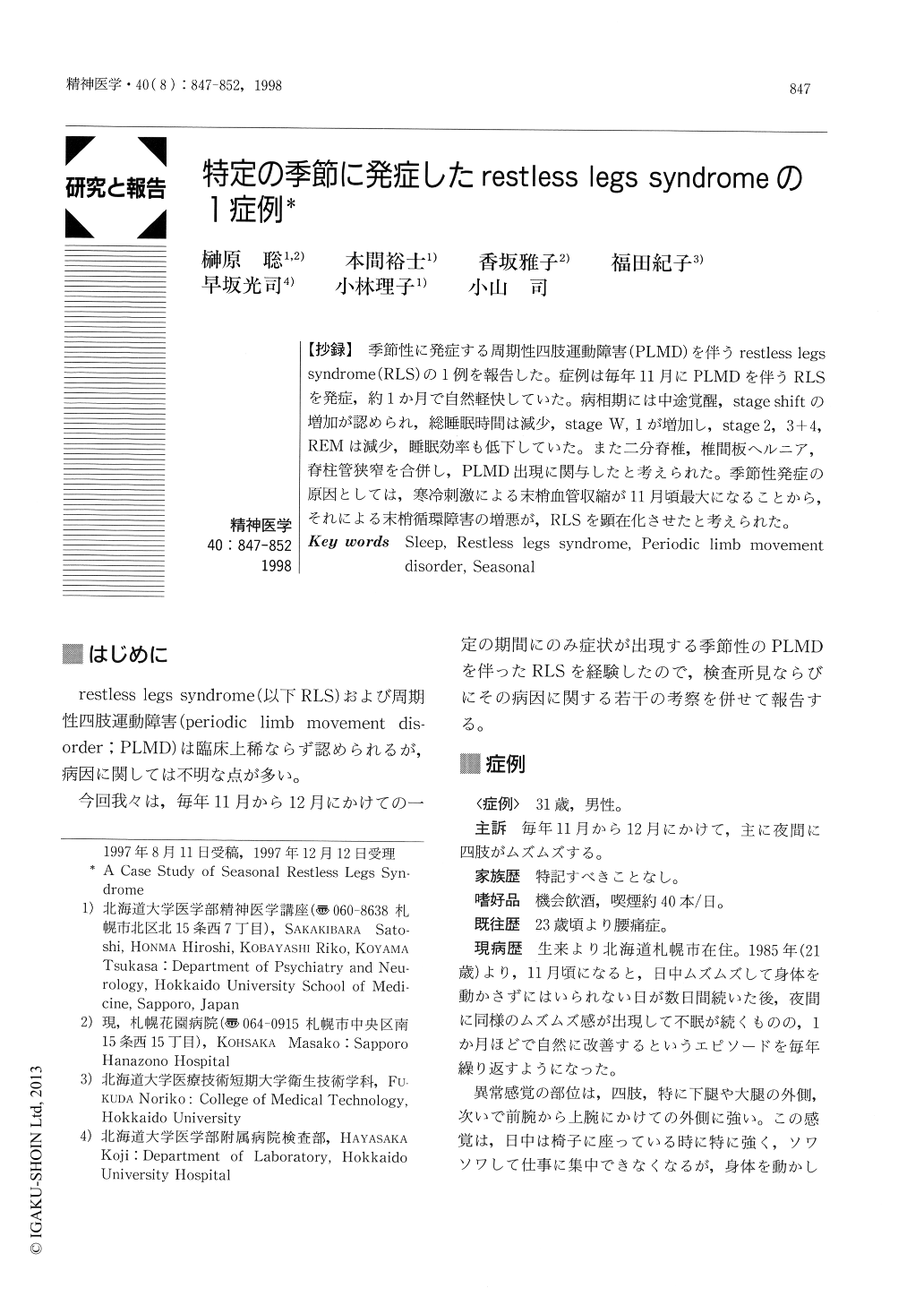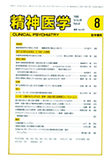Japanese
English
- 有料閲覧
- Abstract 文献概要
- 1ページ目 Look Inside
【抄録】季節性に発症する周期性四肢運動障害(PLMD)を伴うrestless legssyndrome(RLS)の1例を報告した。症例は毎年11月にPLMDを伴うRLSを発症,約1か月で自然軽快していた。病相期には中途覚醒,stage shiftの増加が認められ,総睡眠時間は減少,stage W, 1が増加し,stage 2,3+4,REMは減少,睡眠効率も低下していた。また二分脊椎,椎間板ヘルニア,脊柱管狭窄を合併し,PLMD出現に関与したと考えられた。季節性発症の原因としては,寒冷刺激による末梢血管収縮が11月頃最大になることから,それによる末梢循環障害の増悪が,RLSを顕在化させたと考えられた。
We have found a rare case of restless legs syndrome (RLS) with periodic limb movement disorder (PLMD), which occurs only during November and December every year, since thepatient was 21 years old.
Every November, the patient feels unpleasant creeping sensations during the daytime keeping his limbs in motion. He began to feel the same sensations at night causing insomnia. This episode continues for about one month every year. PLMs were remarkable in the symptomatic period. An X-ray examination of lumbar vertebra demonstrated spina bifida of L5, and lumbar MRI showed anterior dislocation, disk herniation of L4/5, L5/S1 and stenosis of the vertebral canal. As for sleep architecture, nighttime awakenings and stage shifts were more frequent in the symptomatic period than in the asymptomatic period. PLMs were rare in REM sleep even in the symptomatic period. Total sleep time and sleep efficiency index in the symptomatic period were less than those in the asymptomatic period. There were increased stage W and stage 1, and reduced stage 2, stage 3 + 4 and stage REM in the symptomatic period. In this case, the complication of lumbosacral vertebral abnormality may cause functional disturbance of the spinal cord or over-stimulate the peripheral nervous system, and may contribute to PLMs. His symptoms show some differences from those of Ekbom's case which were increased by cold stimulation and were painful. The reason why his symptoms occur during a specific period lasting about a month every year may be as follows : Harada et al have reported that muscle contraction of peripheral blood vessels reacting against cold stimulation has seasonal variations and becomes maximum in autumn. So, in this case, the colder temperature may aggravate the peripheral blood circulation in autumn and cause his symptoms to become more apparent.

Copyright © 1998, Igaku-Shoin Ltd. All rights reserved.


